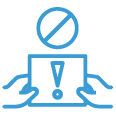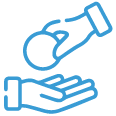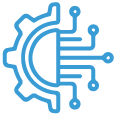After two years of fighting a pandemic by curtailing business activities and restricting the movement of people and cargo, the developed world is now struggling with soaring levels of inflation, disruptions to supply chains, and growing fuel prices. As such, many developed countries such as Great Britain have sought to reduce their humanitarian aid and international developmental assistance budgets, making it more important than ever to demonstrate value for money.
Developed countries have always faced the apparent paradox of having citizens in need of aid at home while still spending sometimes large amounts of money to improve the lives of poor people abroad. Historically, the commitment to financing, implementing, and tracking the progress of international development aid has been promulgated as both a humanitarian act of mercy, justice, and compassion for the less fortunate as well as an investment in the well-being of the entire planet in that people who are lifted out of poverty as a result of developmental assistance will later contribute to the health and prosperity of everyone.
As some foreign aid budgets are being reduced while others shift their geographical priorities and domestic discontent over international development expenditure grows, it has become more important than ever for governments to be able to maximize the effect of every dollar, pound, euro, or yen spent on improving the lives of those that they seek to help in the developing world.
In this article, we will discuss several methods that donor countries, donor agencies, NGOs, and other organizations that fund, manage and track development aid programs and projects have at their disposal to demonstrate maximum efficiency and the highest return for their foreign aid investments.
 Transparency
Transparency
A tried and true maxim is that “sunshine is the best disinfectant” and transparency throughout the entire lifecycle of international aid development funding, disbursement, and implementation is crucial to minimizing corruption, waste, and inefficiency.
According to the latest report from Aid Transparency Index (2020), more than half of OECD donor agencies are now rated “very good” or “good” on funding transparency but the majority of donors continue to struggle to provide transparency on monitoring the impact of development projects and programs.
Thankfully, the International Aid Transparency Initiative (IATI) standards are now helping to improve transparency through the standardization of data records and formatting which leading donors such as the European Union have been adhering to since 2011. That being said, many donors are still being very slow to adopt the IATI standards which produce data in a format that is scarcely more sophisticated than an Excel spreadsheet.
However, an audit by Britain’s National Audit Office (NAO) found that recent cuts to the Foreign, Commonwealth and Development Office (FCDO) were implemented so quickly that no time or effort was expended to review the impact that this would have on the country’s overseas development projects, possibly imperiling the lives of millions of people.
DevelopmentAid, a reputable partner for development agencies, is standardizing and centralizing donor information through its platform thus contributing to ensuring the principle of funding transparency in international development.
 Sanctions and Blacklists
Sanctions and Blacklists
One of the backbones of development aid is ensuring that donated funds will reach the intended target. However, occasionally unethical companies and fraudulent actors have sought to reroute funds for their own use although no one is quite sure how often this occurs. That being said, one of the simplest ways to minimize waste and demonstrate best value for money is through the use of blacklists or special registers of companies and agencies that have been proven to have abused development funds in the past.
Unfortunately, establishing useful blacklists in the developmental aid sector has often proved difficult. For example, in May 2022, an audit of the European Court of Auditors revealed that the current blacklisting system is insufficiently rigorous after it was discovered that only two out of 448 entities barred in the 2016-2020 period from doing business in the EU were placed on the list because of corruption or fraudulent activity (the remainder were due to bankruptcy which automatically prohibits a business or organization from receiving EU funds). Furthermore, the auditors reported that only a handful of EU countries even have a formal blacklisting system in place.
Other organizations, however, such as the World Bank and its Office of Suspension and Debarment have been more vigilant at identifying bad actors. According to their most recent report, eight companies and agencies were banned from doing further business with the World Bank in 2021, and an additional 45 were investigated for possible fraudulent activity.
Keeping track of blacklisted organizations is not easy. Sanctions in particular are often in flux, leaving donors faced with the difficult task of ensuring that they are authorized to work with all of their partners, consultants, and recipients. Thankfully, information service providers such as DevelopmentAid now offer updated tracking of all blacklisted and sanctioned companies, making it far simpler for donors to avoid doing business with suspicious actors. The centralized information on more than 2,000 debarred firms is available here.
 Monitoring
Monitoring
Whereas being sanctioned or placed on a blacklist is the final outcome for established acts of bad faith, fraud, and waste, monitoring project results walks a trickier middle ground as this seeks to ensure that development aid projects have been properly implemented. Only by improving transparency on the impact and effectiveness of development aid projects can donors be assured that the money was well-spent.
However, as few international standards or formats have been agreed upon to track and monitor the impact of aid projects, it is often up to private sector firms to follow up on completed projects to assess their effectiveness. DevelopmentAid is now the leading provider of statistics on more than 260,000 awards in the aid sector. This information has been tracked since 2007 and is available at the following link.
 Donor Harmonization
Donor Harmonization
In 1960, there were just 20 bilateral aid donor agencies and all of these were members of the Organization for Economic Co-operation and Development (OECD). Today, that number has more than doubled and includes 14 non-OECD countries, as well as a myriad of multilateral donors and philanthropic foundations, leading to a unique situation in which two or more donors may be implementing similar projects in the same country or region.
Donor harmonization refers to efforts made by donors to coordinate their international aid projects with one another to minimize unnecessary overlap or the duplication of effort which, of course, would run counter to the principle of best value for money.
In 2003, during the High-Level Forum on Harmonization held in Rome, Italy, OECD donors agreed to implement steps to improve donor harmonization and the better alignment of its members’ development aid strategies. This was further bolstered by the establishment of the Global Partnership for Effective Development Cooperation (GPEDC) in 2011 which was signed by 163 countries and whose ideas were later incorporated into the United Nations’ 2030 Agenda for Sustainable Development and the Sustainable Development Goals (SDGs).
However, a variety of political factors have made implementing better donor harmonization difficult and several reports from the OECD have revealed that countries have struggled to live up to these agreements, particularly when political actors argue that harmonization infringes upon their country’s independence and sovereignty in crafting its foreign aid strategy.
Interestingly, it is the private sector that has provided the best tools to improve donor harmonization. DevelopmentAid, an independent membership organization which has been collecting and collating data since 2007, is now the leading provider of statistics and analytics on donor and agency development investments across regions, sectors, and types of contracts, thus contributing to enhanced donor harmonization.
 Digital4Development (D4D)
Digital4Development (D4D)
One of the most effective modern techniques for ensuring best value for money is the transition to digitizing the entire lifespan of the development aid project cycle, now known in the sector as Digital4Development (D4D).
Exclusively digital data helps to streamline the development process in a number of ways, including the ability to provide assistance remotely (such as e-learning, telehealth, etc.), improved communication between donors and recipients, enhanced transparency via online reporting, and the use of databases for verification and anti-fraud and anti-corruption monitoring, including blacklists.
Often, development aid projects themselves help to increase the availability of digital resources such as building broadband networks, enacting regulatory (internet-based) frameworks for ensuring greater competition and investments in digital, computer, and internet learning in the developing world.
Concomitant with investing in digital infrastructure, digitization also helps developing countries to provide better transparency across the entire lifespan of a project, including tracking, evaluating, and assessing recipient organizations and individuals, better capabilities for finding and hiring experts to implement the project, and greater transparency in the form of publicly accessible documents and reports available online, all of which are part of the SDG number nine which deals with fostering innovation through the construction of resilient infrastructure systems.
Independent companies such as DevelopmentAid are leading the way in improving the digitization of data across the entire lifecycle of aid projects including the automatic publication of tenders and grants across a centralized and searchable platform, maintaining a network of more than 200,000 vendors with experience in the sector and a verified database of CVs to assist donors and agencies in finding, vetting, interviewing and hiring experts and consultants.
 Conclusion
Conclusion
As foreign aid budgets shrink amongst increased competition for domestic spending to support economies and adjust to value chain modifications and increased fuel prices, it is now more important than ever for those donors and agencies working in the foreign aid sector to demonstrate best value for money.
Advanced software tools, a move towards increased digitization, online reporting of not just budgetary outlays but also monitoring the progress and impact of projects, dynamically updated lists of sanctioned companies and individuals, blacklists, and greater access to data about past and present projects are all working to help donors and agencies to minimize waste, improve transparency, combat corruption and maximize the return on investments in foreign aid projects. As more records become standardized and available online and more powerful algorithms are brought to bear, donors and agencies can look forward to a more streamlined and effective implementation of foreign aid funds.

